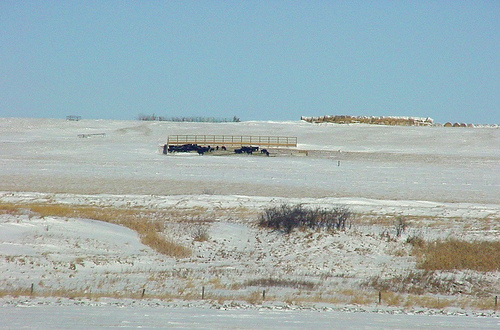A handful of nice high quality inspection service pictures I discovered:
Cattle using a fabricated windbreak in western South Dakota.

Image by USDA NRCS South Dakota
Cattle making use of a fabricated windbreak in western South Dakota. The windbreak was portion of an overall Conservation Plan supplied to the rancher free of charge by the USDA Natural Resources Conservation Service (NRCS). The NRCS staff helped the producer with analyzing their sources, arranging their grazing rotation and designing the windbreak. In places where trees never grow extremely effectively naturally, the fabricated windbreak assists shelter their cattle from the harsh winter winds and snow. There are other benefits to society from conservation practices such as these. Notice the healthy riparian location in the foreground. Locating feeding areas away from waterways assists the vegetation to filter any water as it runs off the pasture.
Photo by Gary Hendrickson, Belle Fourche Field Workplace.
NRCS Assisting Farmers and Ranchers Recover from Winter Storm Atlas
Despite challenging climate, conservationists with USDA’s All-natural Resources Conservation Service in South Dakota are functioning diligently – and often in sub-zero temperatures and snow-covered fields and pastures – to aid ranchers recover soon after Winter Storm Atlas. Recovery perform began quickly when the federal government reopened Oct. 17 and nevertheless continues.
The October 2013 surprise blizzard impacted roughly 28,000 square miles of western South Dakota, an area the size of West Virginia, killing tens of thousands of cattle, sheep, horses and some wildlife.
Community farm and ranch family members gatherings were organized to reach out outlining social, economic and environmental help. Led by the South Dakota Stockgrower’s Association, South Dakota Cattlemen’s Association and South Dakota Sheepgrower’s Association.
NRCS has been assisting farm and ranch family members victims of the storm with technical assistance and a lot more than million in financial help for hundreds of applications that helped with burying or disposal of livestock or repairing destroyed conservation practices.
In early January 2014, in the Sturgis, S.D. region, 15-degree climate permitted inspection and certification of burial pits to make certain they have been constructed in environmentally safe areas. The animal mortality facilities are element of the conservation recovery efforts for producers through the NRCS’ Environmental Top quality Incentives Program (EQIP).
All through western South Dakota, Atlas’ 3 days of cold rain, snow and effective, icy winds pushed livestock into waterways and into and via fences. Some livestock had been even found much more than 20 miles away.
Ranchers and NRCS worked to quickly dispose of livestock carcasses to avert contamination of water bodies. The secondary, and quite genuine advantage, of removing dead animals from the landscape is for the men and women – the families who live off the land – to start healing. The social effects of this catastrophic loss are deep and will take years to heal.
Winter field function is typically uncomfortable, but with the appropriate gear and clothing, we venture out understanding our function is integral to assisting people aid the land in a meaningful way.
In addition, EQIP is helping replace blizzard-damaged conservation practices. We’re renovating windbreaks and shelterbelts to reinforce livestock and headquarters shelter components of ranching operations and supply protection from wind in future storms.
In some circumstances, a fabricated windbreak to replace the living shelterbelt was the best answer to safeguard animals from harsh weather, but also shield environmentally sensitive regions like waterways. We also worked with some ranchers to replace fencing needed for rotational grazing systems and reconstruct of ponds that had been breached or continue to be threatened by high waters since of 3 feet of snowfall.
NRCS field workers can’t repair the heartache and emotional loss they see in the eyes of ranch households, but we are responding with a caring professionalism that is appreciated, and even returned, even though the circumstances have a lot of families beneath considerable stress.
The shared purpose of all parties is guarding surface water top quality, improving animal wellness and moving forward. And our operate with ranchers to rebuild conservation practices prepares ranchers for a productive spring and subsequent year’s winter.